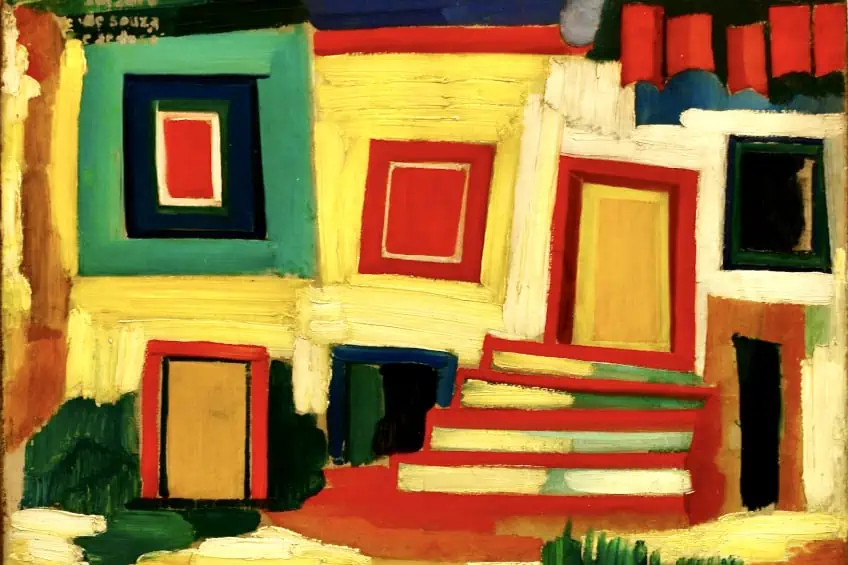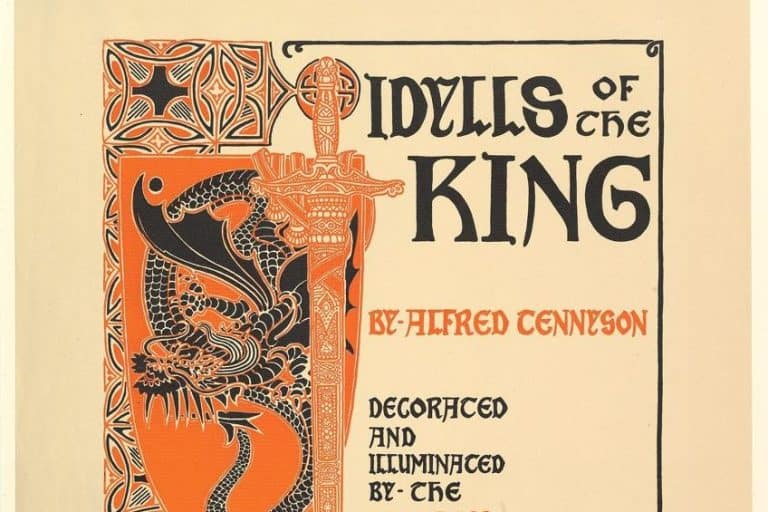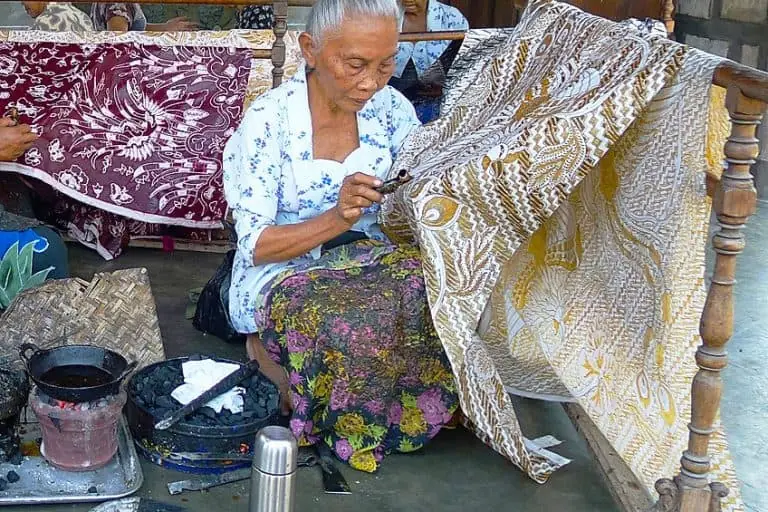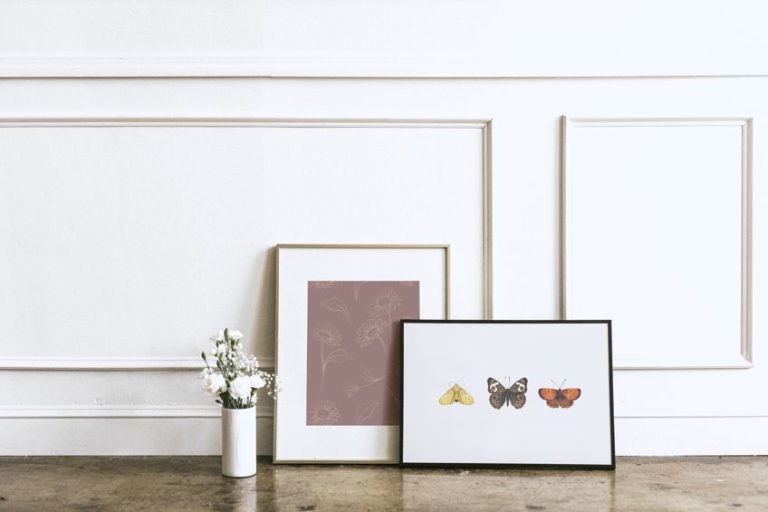Form in Art – How Artists Define Shapes in Space
This post may contain affiliate links. We may earn a small commission from purchases made through them, at no additional cost to you.
What is form in art, and what are the form art examples? According to the form art definition, it is one of the visual art elements and refers to the manner in which a shape occupies physical space. Form in art can be described as the structure, shape, and arrangement of components, such as breadth, length, and depth of a three-dimensional artwork including architecture or sculptures. Rather than utilizing physical shapes to create form, painters use shadow, light, the impression of an object’s contours, negative space, and the surrounding elements to create the impression of form on a flat surface.
Table of Contents
What Is Form in Art?
Form, like shape, texture, line, space, value, and color, is an art element that helps artists create the appearance of three-dimensional depth on a two-dimensional surface. Form in art refers to objects with breadth, length, and height, as opposed to the concept of a shape, which defines the characteristics of two-dimensionality. As shapes gain a dimension of depth, they then become forms, circles become spheres, squares become cubes, and triangles become pyramids or cones.
 Page from an elementary three-dimensional drawing guide by Samuel Edward (1867); Internet Archive Book Images, No restrictions, via Wikimedia Commons
Page from an elementary three-dimensional drawing guide by Samuel Edward (1867); Internet Archive Book Images, No restrictions, via Wikimedia Commons
When we analyze form art examples, we may observe that it appears in both implied and real ways. The form is tangible in sculptural pieces, however, in paintings and drawings, the impression of depth must be indicated through the application of light and the contrasting of highlights and shaded areas.
The Two Types of Form in Art
In art, there are two types of forms: geometric and organic forms. The Geometric forms are derived from distinct, uniform, angular, consistent geometric shapes such as cubes, spheres, pyramids, and cylinders. Organic forms are irregular shapes seen in nature that are typically free-form and asymmetrical. Many Modernist artists in attempting to create new systems of representation, reduced three-dimensional forms to their basic shapes, such as in Francis Picabia’s Straw Chopper (1922).
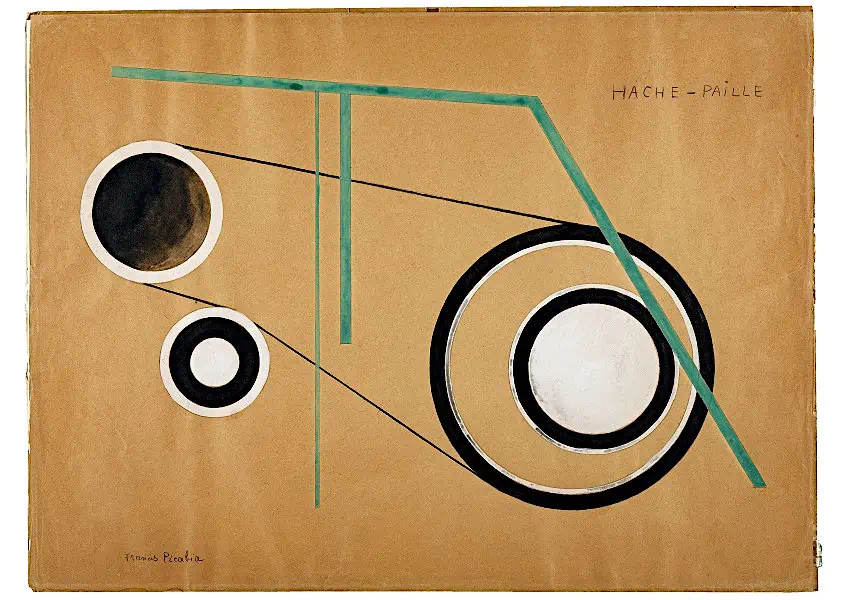 Straw Chopper by Francis Picabia (1922); Pintor Francis Picabia, CC BY-SA 4.0, via Wikimedia Commons
Straw Chopper by Francis Picabia (1922); Pintor Francis Picabia, CC BY-SA 4.0, via Wikimedia Commons
Geometric Forms
The first concept is that of geometric shapes. We typically characterize them as man-made, i.e. created by artists using light and modeling techniques. While trying to paint or draw a realistic image, artists must study the impact that light has on objects in order to create an illusion of form. The “highlight” area is the part where the light source is hitting the object directly. Then there is the core shadow area which refers to the area of the object that falls underneath the shadow of other objects.
The cast shadow is the shadow that the object makes on the surrounding objects, and the reflected light areas are those where light is being reflected off other objects onto the object. With this knowledge of form in art, two-dimensional objects such as squares or circles gain a third dimension and then become geometric forms like cubes or spheres.
These forms had a huge impact on the development of avant-garde and Abstract art, most notably, Cubism. The movement acquired its name and rose to prominence as the most innovative phase of 20th-century art because of the ubiquitous use of the cube in countless works of art.
 Still Life before an Open Window or Place Ravignan by Juan Gris (1915); Juan Gris, CC0, via Wikimedia Commons
Still Life before an Open Window or Place Ravignan by Juan Gris (1915); Juan Gris, CC0, via Wikimedia Commons
Organic Forms
Organic shapes, on the other hand, have breadth, length, and height but are neither angular nor precise in structure. They depend more on chance and principles that many people attribute to natural laws. They are more free and unpredictable, and no biological form can be an exact duplicate of the other. These organic shapes were critical in the development of abstract art. Organic forms also had a huge impact on architectural styles and art movements such as Art Nouveau. Organic form also plays an important role in styles such as Expressionism, where contorted forms are used to convey and evoke emotion.
 The March of the Weavers in Berlin by Käthe Kollwitz (1897); Käthe Kollwitz, Public domain, via Wikimedia Commons
The March of the Weavers in Berlin by Käthe Kollwitz (1897); Käthe Kollwitz, Public domain, via Wikimedia Commons
Real and Implied Surroundings
The study of form in art is simultaneously a discourse on context and depth in art. The concept of form in art is recognized without many difficulties in the sculpting discipline because these clearly occupy the three-dimensional environment of a gallery or outdoor venue. This is not the case with drawing or painting and many artists employ this experimentation with three-dimensionality to produce fascinating instances of form art examples that challenge perception.
 The Little Bright House – Landscape by Amadeo de Souza-Cardoso (c. 1915-1916); Pedro Ribeiro Simões from Lisbon, Portugal, CC BY 2.0, via Wikimedia Commons
The Little Bright House – Landscape by Amadeo de Souza-Cardoso (c. 1915-1916); Pedro Ribeiro Simões from Lisbon, Portugal, CC BY 2.0, via Wikimedia Commons
Real Surroundings
In sculpture, there are two techniques to represent form: sculpture in the round and sculpture in relief. Sculptures produced in the round are three-dimensional sculptures that are generally carved from a solid block of wood, stone, or clay. Round sculptures are standalone objects and may be admired from all angles.
Miquel Barceló Great Elephant Standing is an excellent example of how sculptural form can be used to defy a viewer’s expectation of the conventional impact of gravity on mass and volume.
 Great Elephant Standing (Gran elegant dret) by Miquel Barceló (2009); Bestiasonica, CC BY 3.0, via Wikimedia Commons
Great Elephant Standing (Gran elegant dret) by Miquel Barceló (2009); Bestiasonica, CC BY 3.0, via Wikimedia Commons
A relief sculpture is sculpted from flat material to resemble a three-dimensional image. Relief sculptures can be created in either bas relief or low relief, where an artist uses light sculpting to emphasize the intricacies of a two-dimensional surface, or high relief, where the objects emerge from the two-dimensional plane. Lorenzo Ghiberti’s Gates of Paradise from the 15th century Italian Renaissance, which is sculpted out of bronze and inset on the entrance of the St. John Baptistery in Florence, Italy, is a notable example of a relief sculpture.
Implied Surroundings
M.C Escher created beautiful artworks using the concept of both negative and positive space, which confused the eyes and made it hard for us to discern whether the emphasis of the works was on the backdrop or the foreground shapes. Several artists experiment with perception and three-dimensionality using the trompe l’oeil approach. These paintings and murals create the illusion of depth inside a two-dimensional surface by experimenting with various organic or geometric forms. Artists create astonishing three-dimensional shapes on a flat canvas, piece of paper, or even sidewalk by understanding the laws of form in art and experimenting with two-dimensional forms.
Combining frontal and profile viewpoints of the body is the simplest approach for displaying the human form on a two-dimensional surface. Ancient Egyptian artists, for instance, portrayed figures with the legs and head in profile and the torso presented frontally.
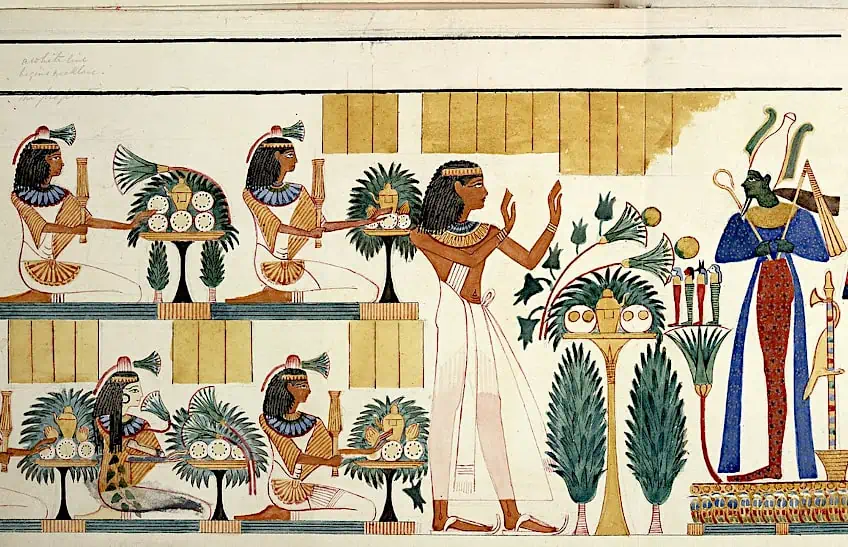 Copy of a fresco depicting a procession of figures with offerings from the tenth tomb at Gourna, Thebes. Made during an expedition to Egypt organised by Robert Hay (between 1826 and 1838); British Library, CC0, via Wikimedia Commons
Copy of a fresco depicting a procession of figures with offerings from the tenth tomb at Gourna, Thebes. Made during an expedition to Egypt organised by Robert Hay (between 1826 and 1838); British Library, CC0, via Wikimedia Commons
During the Italian Renaissance, artists produced form by casting shadows using a source of light and vanishing points to represent depth. These optical illusions depicted space as it appears in reality. The Last Supper by Leonardo da Vinci, for instance, provides the appearance of three-dimensional shapes filling deep space. Abstraction is a technique used by artists to experiment with form by utilizing geometric shapes to depict biomorphic shapes that naturally occur. Pablo Picasso experimented with painting the typically soft, curving feminine figure with sharp geometric forms, emphasizing the features of organic shapes.
How Artists Use Form in Art
Visual artists use the impact of lighting and shadows to create the illusion of three-dimensional figures. The graffiti artist Banksy regularly uses this approach, and several of his most famous pieces focus on the contrast between black, white, and gray. Aakash Nihalani, like Banksy, employs color contrast to create the illusion of depth. His geometric artworks and urban art installations are excellent form art examples of how he manipulates the eye’s method of perception and the use of form in art to produce modern trompe l’oeil imagery.
Richard Serra, a well-known artist, makes gigantic free-standing structures by twisting flat sharp metals, whereas Jeff Koons creates large-scale sculptures noted for the volume of their form.
 Balloon Swan by Jeff Koons (2004-2011); Andy García García, CC BY-SA 4.0, via Wikimedia Commons
Balloon Swan by Jeff Koons (2004-2011); Andy García García, CC BY-SA 4.0, via Wikimedia Commons
Form in art must be regarded as a lesson about space and the concept of three-dimensionality in the same way that it’s a lesson about lighting and shadows. Together with volume, perspective, rhythm, and contrast, form in art enables artists to become virtuosos producing magical illusions on two-dimensional surfaces.
Elements of Art Overview
Form is one of the seven elements that make up art or the visual tools that a creator uses while creating a piece of art. Form denotes anything three-dimensional and comprising volume, with length, breadth, and height, as opposed to a shape, which is two-dimensional. A form is a three-dimensional shape that can be organic or geometric. By gaining a better grasp of what form in art is, you can make your artwork appear much more tangible and realistic, whether it be on a flat surface or a sculpture!
Frequently Asked Questions
What Is the Definition of Form in Art?
Form in art is the appearance and existence of three-dimensional shapes and/or objects in space. Form may be created in a variety of ways, including painting, drawing, sculpting, and installation. Form in art can be utilized to provide dimension and depth to a two-dimensional piece of art, or to produce a three-dimensional sculpture that fills physical space. Geometric shapes are mathematical and exact, but organic forms are free-flowing, sinuous, and asymmetrical. Painting has historically moved from a flat depiction of space and form to a three-dimensional portrayal of space and form, and finally to abstraction.
How Is Form in Art Analyzed?
A formal study of a piece of art is distinct from one of its subject matters or context. Formal analysis in art involves visually analyzing a work using the components and principles of art. Formal analysis can highlight compositional choices that assist to emphasize meaning, the substance of the piece, and the artist’s goal, as well as historical context. For instance, the sensations of mystery, wonder, and transcendence elicited by some of the most enduring Renaissance works are separate from the formal compositional elements utilized by the artist to construct the picture, which contribute to its interpretation, impact, and timeless character.
In 2005, Charlene completed her wellness degrees in therapeutic aromatherapy and reflexology at the International School of Reflexology and Meridian Therapy. She worked for a company offering corporate wellness programs for several years before opening her own therapy practice. In 2015, she was asked by a digital marketer friend to join her company as a content creator, and it was here that she discovered her enthusiasm for writing. Since entering the world of content creation, she has gained a lot of experience over the years writing about various topics such as beauty, health, wellness, travel, crafting, and much more. Due to various circumstances, she had to give up her therapy practice and now works as a freelance writer. Since she is a very creative person and as a balance to writing likes to be active in various areas of art and crafts, the activity at acrylgiessen.com is perfect for her to contribute their knowledge and experience in various creative topics.
Learn more about Charlene Lewis and about us.
